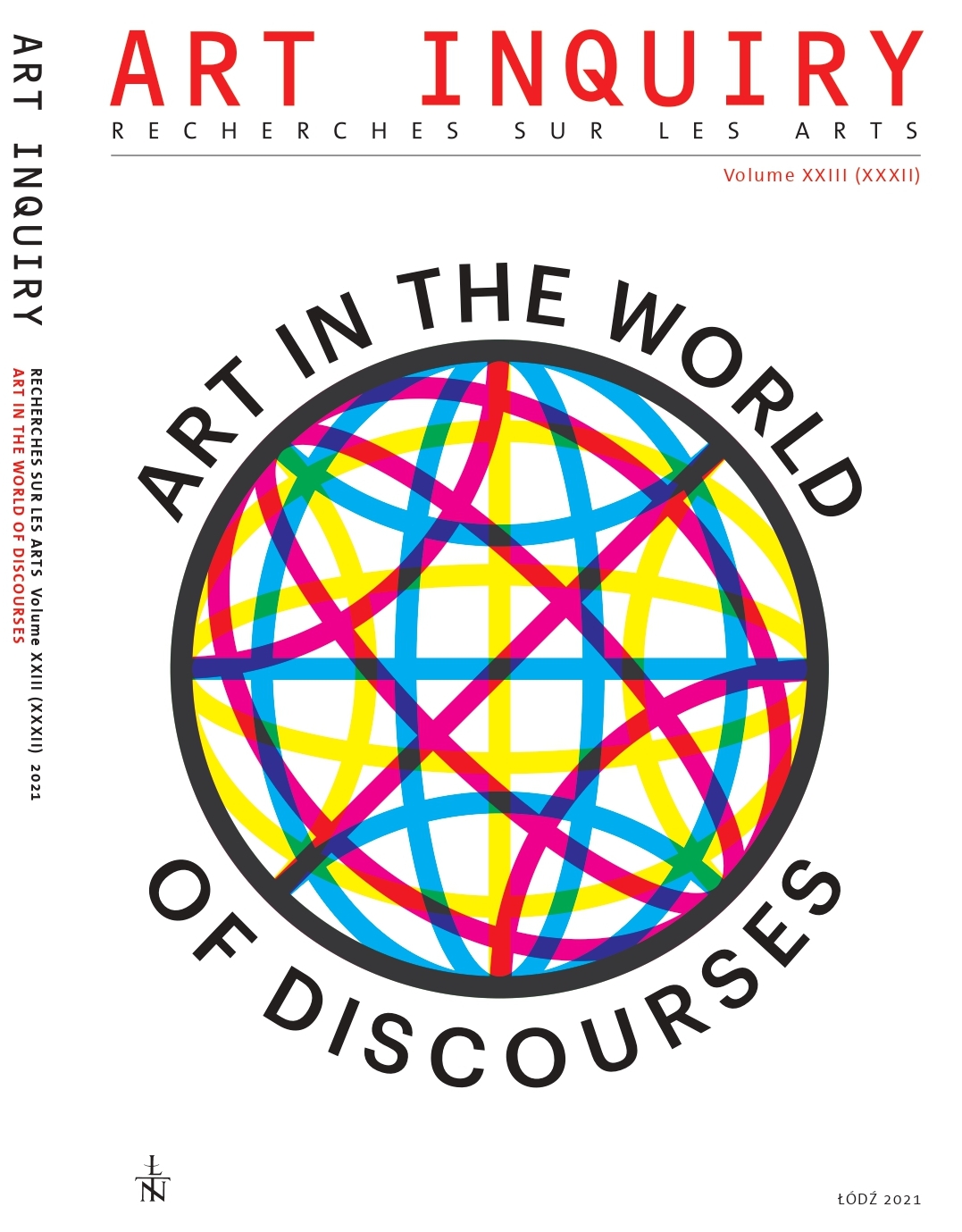Discursiveness of art as a philosophical problem
DOI:
https://doi.org/10.26485/AI/2021/23/2Keywords:
discourse of art, discursiveness of art, language, literature, painting, the visible, the invisible, visualityAbstract
Is it still possible to speak of an opposition of linguistic discourse and art after the notions of language, as well as discourse and the discursive have undergone a significant reformulation and expansion? To answer this question, I distinguish between the notions of discourse and the discursive. I transpose this distinction onto the level of reflection on art as one of signifying practices. I show how the deconstruction of Western discourses on art is accompanied by the recognition of discursiveness of art by Heidegger, Derrida and Marin; like Merleau-Pointy, I search for the conditions of significant production underneath or “before” historically established discourses, expanding the idea of discursiveness of art in the sense that I adopt. I connect Lyotard’s concept of visuality with the understanding of discursiveness of art that I propose: as a field of productivity of meanings, a primary impulse of discourse; the thing that enables spe- aking and imaging, without which speech and image are impossible
References
R. Barthes, S/Z, trans. Richard Miller, Blackwell, New York, 1990.
J. F. Lyotard, Discours, figure, Klincksieck, Paris, 1985.
D. Howarth, Discourse, Open University Press, Buckingham UK, 2000.
L. Marin, De la représentaion, Gallimard, Le Seuil, Paris 1994.
M. Merleau-Ponty, The Visible and the Invisible: Followed by Working Notes. Northwestern University Press, 1968.
P. Ricoeur, Struktura a znaczenie w mowie, in: Egzystencja i hermeneutyka. Rozprawy o metodzie, trans. J. Skoczylas, Warszawa, 1985





